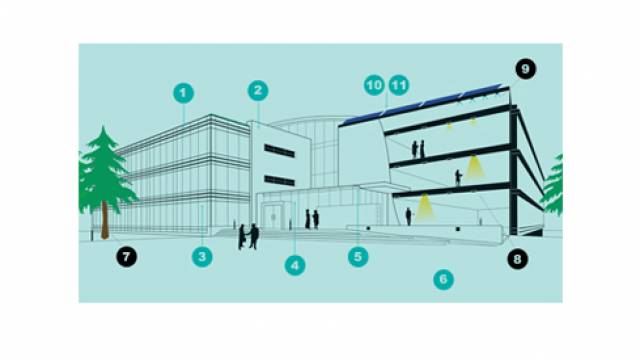To get an idea of the various ways that silicones can contribute to green building designs, just take a look at Dow Corning’s new European headquarters building in Seneffe, Belgium, which incorporates silicon-based technology, designs, new products and where even trees trim energy use and reduce overall carbon footprint.
From the solar panels on the roof to the triple-glazed windows, the LED lighting to the thin new vacuum-insulated panels in the walls, advances in green construction include silicon technology. And it’s no wonder. Endlessly versatile compounds, silicones have unique material properties that add up to success for builders, architects, owners and materials-makers.
Dow Corning’s new European headquarters building in Seneffe, Belgium gives an idea of the various ways that silicones can contribute to green building designs. A close look reveals the way this project incorporated silicon-based technology, designs, new products and even trees to trim energy use and reduce overall carbon footprint.
The Role of Silicon Technology:
1. Silicone structural glazing facilitates lower U-values versus mechanical fixation
2. Vacuum Insulation Panels for increased performance
3. Double- or triple-pane low-E glazing
4. Install & Go Window System to improve energy efficiency
5. Structurally bonded doors and windows for higher energy efficiency
6. Double-skin or active façade
7. Evergreen plant shield against sun and wind
8. Lighting control using motion detection sensors
9. Automated ventilation control using natural light
10. Weatherproofing silicone sealants for airtightness
11. Photovoltaic energy panels




